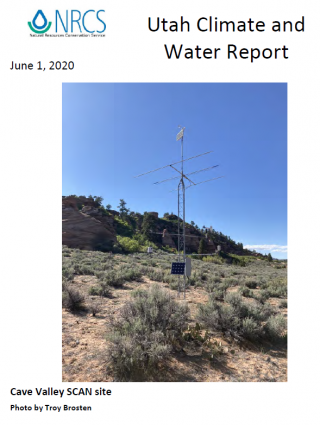Utah Climate and Water Report

May was another rough month for precipitation in Utah’s valley locations, where the statewide average precipitation ticked up just 0.3 inches. The water year total for Utah’s lower elevations now stands at just 6 inches. This, coupled with very high temperatures, has caused a further deterioration in drought conditions and subsequent increase in fire danger. Specifically, the percentage of Utah under drought conditions (D0-D4) increased to about 90% of the state in May. Furthermore, the area of Severe Drought (D2) increased to about 15% of the state, encompassing almost all of Juab County. On average, soil moisture conditions are significantly below normal and soil temperatures are very high.
Utah’s mountain locations have received below average precipitation this water year. As of June 1st, the water-year-to-date (October through May) precipitation is 81% of average. The last couple months have been particularly dry—precipitation at SNOTEL sites during May was only 31% of average. This has led to early melting of the snowpack and subsequent early drying of soil moisture conditions in Utah’s mountains. Currently, the statewide mountain soil moisture is at 65% of saturation, compared to 84% last year at this time. The dry soils have been accompanied by above-average air temperatures, resulting in soil temperatures that are well above normal. In several regions of the state, soil temperatures are higher than any previous observations for this time of year. These warm, dry soils are a concern as we head into the summer fire hazard season. Still, Utah’s reservoirs are in good condition: statewide reservoir storage is at 89% of capacity, compared to 82% last year. Much of this has to do with excellent carryover from last year’s outstanding snowpack and runoff.
To read the entire report, please click here.

